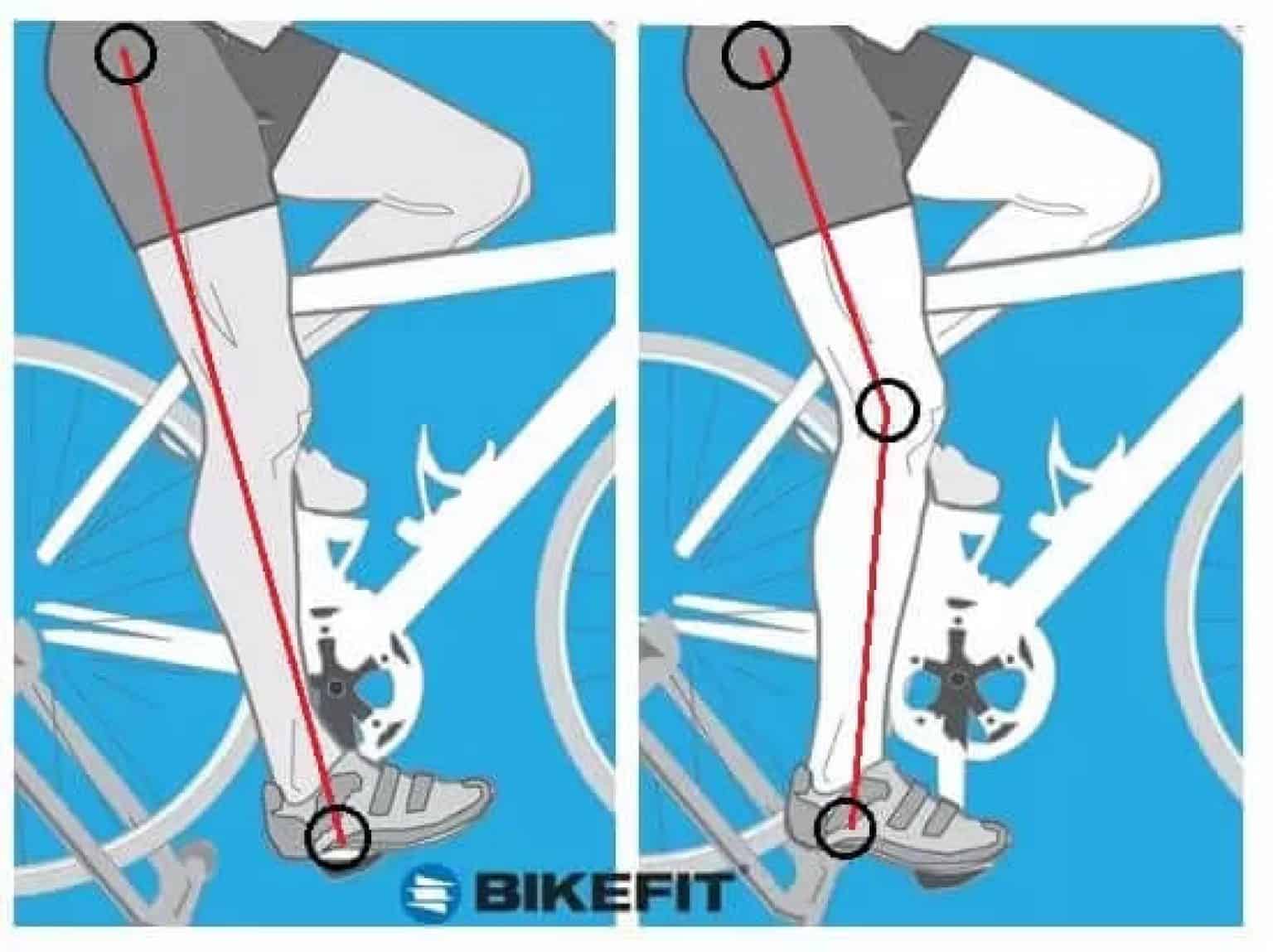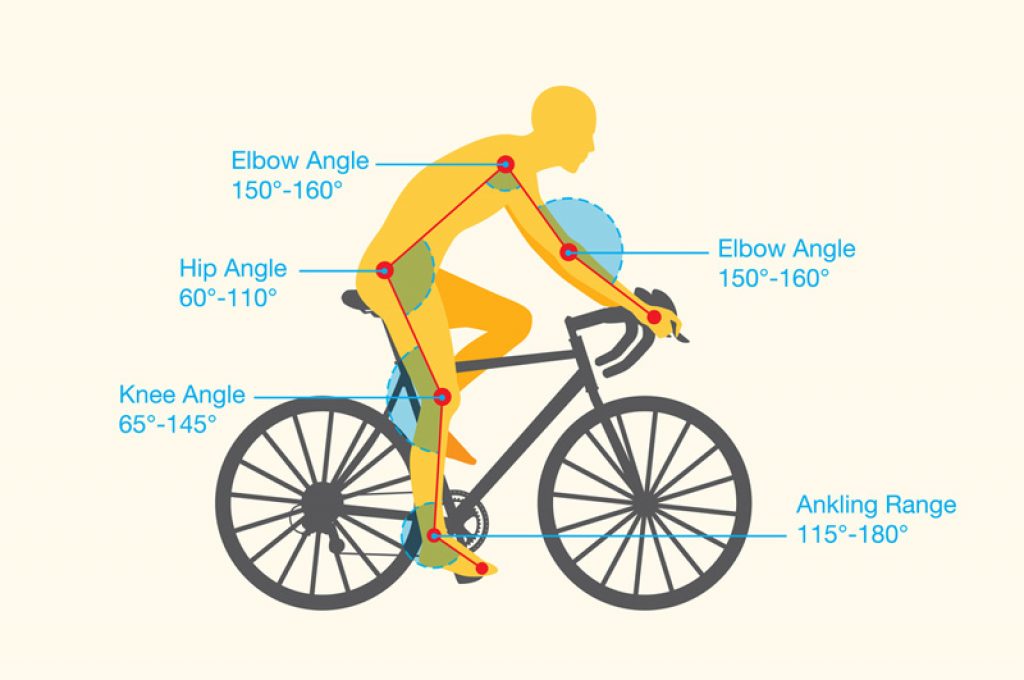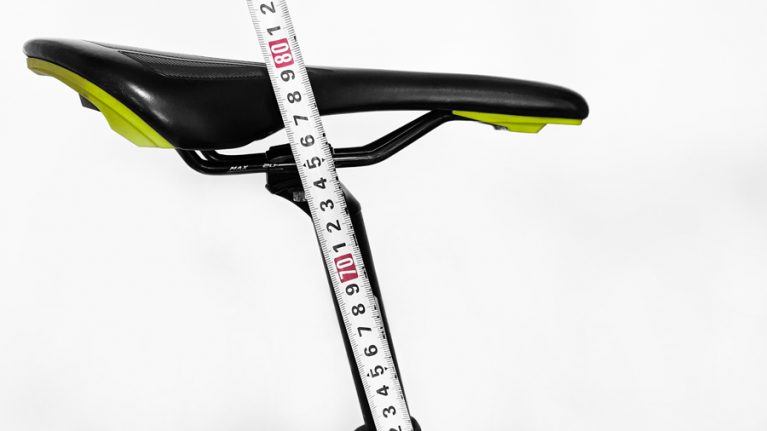Why Proper Bike Fit Matters for Comfort and Performance
A well-fitted bike is essential for a comfortable and efficient ride. When the bike is properly fitted to the rider, it can make a significant difference in the overall cycling experience. A bike that is too small or too large can lead to discomfort, fatigue, and even injury. Proper bike fit is crucial for maintaining a comfortable riding position, reducing the risk of injury, and enhancing performance.
One of the most critical aspects of bike fit is the seat height. When the seat is too high or too low, it can cause strain on the legs, back, and hands. This can lead to discomfort, numbness, and even pain. On the other hand, when the seat is at the correct height, it allows for optimal leg extension, reducing the risk of injury and improving performance.
Many cyclists overlook the importance of proper bike fit, often resulting in a bike that is not tailored to their specific needs. This can lead to a range of issues, including back pain, knee strain, and numbness in the hands and feet. By taking the time to ensure a proper bike fit, cyclists can enjoy a more comfortable and efficient ride, reducing the risk of injury and improving overall performance.
So, how high should the seat be on a bike? The ideal seat height varies depending on the type of bike, riding style, and personal preference. Generally, the seat should be adjusted so that the leg is almost fully extended when the pedal is in its lowest position. This allows for optimal leg extension, reducing the risk of injury and improving performance.
By prioritizing proper bike fit and adjusting the seat height accordingly, cyclists can enjoy a more comfortable and efficient ride. Whether you’re a seasoned pro or a beginner, taking the time to ensure a proper bike fit can make a significant difference in your overall cycling experience.
Understanding the Relationship Between Seat Height and Leg Extension
Leg extension is a critical factor in determining the ideal seat height for a bike. It refers to the distance between the pedal and the seat, and it plays a significant role in maintaining a comfortable and efficient riding position. When the leg is almost fully extended, it allows for optimal power transfer and reduces the risk of injury.
The ideal leg extension range varies depending on the type of bike and riding style. For road bikes, a leg extension of 80-90% is recommended, while for mountain bikes, a leg extension of 70-80% is preferred. This is because road bikes require a more aerodynamic position, while mountain bikes require a more upright position for better control and maneuverability.
When determining the ideal seat height, it’s essential to consider the type of bike and riding style. For example, if you’re riding a road bike, you’ll want to prioritize a more aerodynamic position, which may require a slightly higher seat height. On the other hand, if you’re riding a mountain bike, you’ll want to prioritize a more upright position, which may require a slightly lower seat height.
So, how high should the seat be on a bike? The answer depends on the individual rider and their specific needs. However, as a general rule of thumb, the seat should be adjusted so that the leg is almost fully extended when the pedal is in its lowest position. This allows for optimal leg extension, reducing the risk of injury and improving performance.
By understanding the relationship between seat height and leg extension, riders can make informed decisions about their bike fit and optimize their riding position for comfort and performance. Whether you’re a seasoned pro or a beginner, taking the time to adjust your seat height can make a significant difference in your overall cycling experience.
How to Determine Your Ideal Seat Height: A Step-by-Step Guide
Determining the ideal seat height for your bike can be a straightforward process if you follow a few simple steps. Here’s a step-by-step guide to help you find your perfect seat height:
Step 1: Measure Your Inseam
Start by measuring your inseam, which is the distance from the floor to the crotch of your pants. This measurement will give you a baseline for determining your ideal seat height. To measure your inseam, stand against a wall with your feet shoulder-width apart and measure the distance from the floor to the crotch of your pants.
Step 2: Calculate Your Ideal Seat Height
Once you have your inseam measurement, you can use a bike fit calculator or a simple formula to calculate your ideal seat height. A general rule of thumb is to multiply your inseam by 0.65 to 0.70 to get your ideal seat height. For example, if your inseam is 32 inches, your ideal seat height would be 20.8 to 22.4 inches.
Step 3: Consider Your Leg Length and Riding Style
In addition to your inseam, you should also consider your leg length and riding style when determining your ideal seat height. If you have longer legs, you may need a slightly higher seat height to accommodate your leg length. Similarly, if you’re a more aggressive rider, you may prefer a slightly lower seat height to improve your aerodynamics.
Step 4: Test Your Seat Height
Once you’ve calculated your ideal seat height, it’s essential to test it out on your bike. Start by setting your seat height to the calculated value and then ride your bike for a few miles to see how it feels. Pay attention to your comfort level, pedaling efficiency, and overall riding experience.
Step 5: Fine-Tune Your Seat Height
After testing your seat height, you may need to make some fine-tune adjustments to get the perfect fit. This may involve raising or lowering your seat height by small increments until you find the optimal position. Remember to always prioritize comfort and efficiency when adjusting your seat height.
By following these steps, you can determine your ideal seat height and enjoy a more comfortable and efficient ride. Remember to always consider your inseam, leg length, and riding style when determining your ideal seat height, and don’t be afraid to experiment and fine-tune your fit until you find the perfect position.
The Consequences of Incorrect Seat Height: Common Issues and Injuries
Incorrect seat height can lead to a range of issues and injuries, affecting both comfort and performance. When the seat is too high or too low, it can cause strain on the legs, back, and hands, leading to discomfort, fatigue, and even pain.
One of the most common issues associated with incorrect seat height is back pain. When the seat is too high, it can cause the rider to lean forward, putting strain on the back and shoulders. This can lead to discomfort, stiffness, and even long-term damage.
Knee strain is another common issue associated with incorrect seat height. When the seat is too low, it can cause the rider to pedal with an unnatural motion, putting strain on the knees and leading to discomfort, pain, and even injury.
Numbness in the hands and feet is also a common issue associated with incorrect seat height. When the seat is too high or too low, it can cause the rider to put too much pressure on the hands and feet, leading to numbness, tingling, and even pain.
In addition to these issues, incorrect seat height can also lead to a range of other problems, including poor pedaling efficiency, reduced power output, and decreased overall performance.
It’s essential to note that these issues can be avoided by taking the time to find the perfect seat height. By following the steps outlined in this guide, riders can ensure a comfortable and efficient ride, reducing the risk of injury and improving overall performance.
So, how high should the seat be on a bike? The answer depends on the individual rider and their specific needs. However, by understanding the consequences of incorrect seat height and taking the time to find the perfect fit, riders can enjoy a more comfortable and efficient ride.
Adjusting Your Seat Height: Tips and Tricks for a Smooth Ride
Adjusting your seat height can be a straightforward process if you know the right techniques. Here are some tips and tricks to help you fine-tune your seat height for optimal comfort and performance:
Use a Bike Fit Calculator
A bike fit calculator can be a valuable tool in determining your ideal seat height. These calculators take into account your inseam, leg length, and riding style to provide a recommended seat height. You can find bike fit calculators online or through mobile apps.
Make Adjustments on the Fly
When adjusting your seat height, it’s essential to make small adjustments and test the fit as you go. This will help you avoid over- or under-adjusting the seat height, which can lead to discomfort and poor performance.
Consider Your Riding Style
Your riding style can significantly impact your seat height. If you’re a more aggressive rider, you may prefer a slightly lower seat height to improve your aerodynamics. On the other hand, if you’re a more casual rider, you may prefer a slightly higher seat height for improved comfort.
Test the Fit
Once you’ve adjusted your seat height, it’s essential to test the fit. Take your bike for a spin and pay attention to your comfort level, pedaling efficiency, and overall performance. Make any necessary adjustments to fine-tune the fit.
Use a Seat Height Adjustment Tool
A seat height adjustment tool can be a valuable asset in fine-tuning your seat height. These tools allow you to make precise adjustments to your seat height, ensuring a perfect fit every time.
By following these tips and tricks, you can adjust your seat height for optimal comfort and performance. Remember to always prioritize your comfort and safety when adjusting your seat height, and don’t be afraid to experiment and fine-tune the fit until you find the perfect position.
Product Review: Top Bike Seat Height Adjustment Tools
When it comes to adjusting your seat height, having the right tools can make all the difference. In this review, we’ll take a look at some of the top bike seat height adjustment tools on the market, including products from brands such as Park Tool, Lezyne, and Silca.
Park Tool Seat Height Adjustment Tool
The Park Tool Seat Height Adjustment Tool is a popular choice among cyclists. This tool allows for precise adjustments to be made to the seat height, and is compatible with a wide range of bike models. The tool is also durable and easy to use, making it a great option for those who want to fine-tune their seat height.
Lezyne Seat Height Adjustment Tool
The Lezyne Seat Height Adjustment Tool is another great option for cyclists. This tool features a compact design and is easy to use, making it perfect for those who want to make adjustments on the go. The tool is also compatible with a wide range of bike models, and is durable enough to withstand regular use.
Silca Seat Height Adjustment Tool
The Silca Seat Height Adjustment Tool is a high-end option for cyclists who want the best. This tool features a precision-engineered design and is compatible with a wide range of bike models. The tool is also durable and easy to use, making it a great option for those who want to fine-tune their seat height.
Comparison of Features and Benefits
When it comes to choosing a bike seat height adjustment tool, there are several factors to consider. Here’s a comparison of the features and benefits of each tool:
Park Tool Seat Height Adjustment Tool:
- Precise adjustments
- Compatible with a wide range of bike models
- Durable and easy to use
Lezyne Seat Height Adjustment Tool:
- Compact design
- Easy to use
- Compatible with a wide range of bike models
Silca Seat Height Adjustment Tool:
- Precision-engineered design
- Compatible with a wide range of bike models
- Durable and easy to use
Conclusion
When it comes to adjusting your seat height, having the right tool can make all the difference. The Park Tool, Lezyne, and Silca seat height adjustment tools are all great options, each with their own unique features and benefits. By choosing the right tool for your needs, you can fine-tune your seat height and enjoy a more comfortable and efficient ride.
Common Mistakes to Avoid When Adjusting Your Seat Height
When adjusting your seat height, there are several common mistakes to avoid. These mistakes can lead to discomfort, poor performance, and even injury. Here are some of the most common mistakes to avoid:
Over- or Under-Adjusting
One of the most common mistakes is over- or under-adjusting the seat height. This can lead to discomfort, poor performance, and even injury. To avoid this mistake, make small adjustments and test the fit as you go.
Neglecting to Consider Riding Style
Another common mistake is neglecting to consider riding style when adjusting the seat height. Different riding styles require different seat heights, so it’s essential to consider your riding style when making adjustments.
Failing to Test the Fit
Failing to test the fit is another common mistake. This can lead to discomfort, poor performance, and even injury. To avoid this mistake, test the fit after making any adjustments and make any necessary changes.
Not Considering Inseam and Leg Length
Not considering inseam and leg length is another common mistake. These factors can significantly impact the ideal seat height, so it’s essential to consider them when making adjustments.
Not Using a Bike Fit Calculator
Not using a bike fit calculator is another common mistake. These calculators can help you determine the ideal seat height based on your inseam, leg length, and riding style.
By avoiding these common mistakes, you can ensure a comfortable and efficient ride. Remember to always prioritize your comfort and safety when adjusting your seat height, and don’t be afraid to experiment and fine-tune the fit until you find the perfect position.
Conclusion: Finding Your Perfect Seat Height for a Comfortable and Efficient Ride
Proper seat height is essential for a comfortable and efficient ride. By following the steps outlined in this guide, you can determine your ideal seat height and make adjustments to optimize your bike fit. Remember to consider factors such as inseam, leg length, and riding style when determining your ideal seat height.
Final Checklist:
- Measure your inseam and leg length to determine your ideal seat height
- Consider your riding style and adjust your seat height accordingly
- Use a bike fit calculator to determine your ideal seat height
- Make adjustments to your seat height and test the fit
- Experiment and fine-tune your seat height for optimal comfort and performance
By following these steps and considering the factors outlined in this guide, you can find your perfect seat height and enjoy a more comfortable and efficient ride. Remember to always prioritize your comfort and safety when adjusting your seat height, and don’t be afraid to experiment and fine-tune the fit until you find the perfect position.
So, how high should the seat be on a bike? The answer depends on the individual rider and their specific needs. However, by following the steps outlined in this guide, you can determine your ideal seat height and make adjustments to optimize your bike fit.







